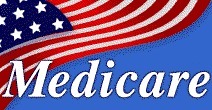by
Kristen Fischer, DOTmed News | July 06, 2011
Physicians who refer their patients to on-site imaging services may be a significant factor when it comes to the growth of the diagnostic imaging field and are costing Medicare Part B billions, according to a new study in the Journal of the American College of Radiology.
Researchers looked at physicians (and non-physicians) who refer patients to external facilities in which they have a financial interest, compared to those who refer patients to a facility they have no financial affiliation with. In short, they wanted to determine the frequency of referrals made by those who have on-site X-rays, MRIs, CTs, and the like, compared to those who do not. (Doctors are generally prohibited from referring patients under Medicare to facilities in which they have an ownership interest, but there's an exception for ancillary services such as imaging that is delivered in the same office.)
Self-referrers more likely to order imaging




Ad Statistics
Times Displayed: 44472
Times Visited: 1374 Keep biomedical devices ready to go, so care teams can be ready to care for patients. GE HealthCare’s ReadySee™ helps overcome frustrations due to lack of network and device visibility, manual troubleshooting, and downtime.
Ramsey K. Kilani, M.D., an adjunct faculty member at Duke University and private practice radiologist in Arizona, led the study. It found that non-radiologist self-referrers of medical imaging are approximately 2.48 times more likely to order imaging than clinicians with no financial interest, which translates to an increased imaging utilization rate of 59.7%.
According to a 2008 Government Accountability Office report, $14.1 billion was spent on diagnostic imaging in 2006, and 64%, or $9 billion of that, went to physician offices. Of that amount, 68% went to non-radiologists.
"It is clear that when physicians have a financial incentive to order medical imaging, it leads to over-utilization which drives up health care costs and subjects patients to unnecessary radiation," said Mark Bramwit, M.D., president of the Radiological Society of New Jersey.
According to Bramwit, other studies have shown that with in-office medical equipment, referrals have risen by up to 700%.
Medicare paying for excess
Based on the utilization rate of 59.7%, the theoretical associated cost to Medicare Part B was $3.6 billion, but Kilani said that's a conservative number because there is not enough information about all of the equipment being utilized to accurately tabulate a figure.
Kilani said many practices refer patients to their own equipment simply because it's convenient for the patient, but said they may also do so to offset the cost of the equipment (or general business expenses) by ensuring they get a large enough volume of patients to generate income. He said that when Medicare Part B pays a reimbursement to a self-referring practice, it excludes other practices that there's no financial affiliation with from getting the money, which presents a conflict of interest.


Charles Moore
A very biased report coming from a radiology viewpoint
July 07, 2011 11:29
It is obviously in a radiologists best interest to see all diagnostic testing removed from non- radiology physician practices. Therefore this position rendered by this report is biased from the "get go" and the data can't be trusted. At the end of the day, both radiologists and non-radiologists will suffer via cuts in reimbursements because of misleading studies like this. Physicians need to realize they are cutting their own throats with studies attacking other physicians.
to rate and post a comment